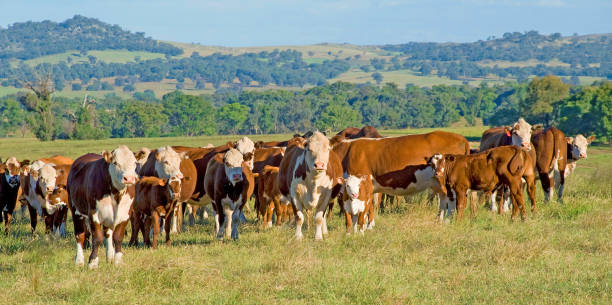Exploring Constance Cattle Genes: Insights into Reproduction Techniques and Characteristics
Exploring Constance Cattle Genes: Insights into Reproduction Techniques and Characteristics
Blog Article
Master the Art of Food Preparation With Turf Fed Meat
In the world of culinary knowledge, mastering the art of cooking with grass-fed meat holds a prestigious placement. The unique high quality of grass-fed meat offers a myriad of advantages that not just boost the taste of dishes but also add to a healthier way of living. From the tender appearance to the robust flavor profile, grass-fed meat provides a canvas for culinary imagination. As we discover the subtleties of this premium meat choice, uncovering the most effective cooking methods, flavor pairings, and storage strategies, a globe of gastronomic possibilities unravels. Whether you are an aspiring home or an experienced cook cook, diving right into the realm of grass-fed meat assures a journey full of delightful experiences and culinary discoveries.
Benefits of Grass-Fed Meat

When choosing grass-fed meat, customers can take advantage of its higher degrees of omega-3 fats and anti-oxidants compared to traditionally raised meat. Constance Cattle. Omega-3 fats are necessary nutrients that sustain mind wellness, lower inflammation, and promote heart health. Grass-fed meat is known to have up to five times more omega-3 fats than grain-fed meat, making it a much healthier option for those aiming to raise their intake of these advantageous fats
In enhancement to omega-3 fats, grass-fed meat is also richer in anti-oxidants such as vitamins E and C, as well as beta-carotene. Antioxidants play a critical role in securing cells from damages created by complimentary radicals, which can add to numerous chronic illness and accelerate aging. By going with grass-fed meat, consumers can not just appreciate a more tasty and nutrient-dense healthy protein source but also support their total health and wellness and wellness.
Including grass-fed meat right into your diet can be a simple yet effective way to improve your dietary consumption and profit of omega-3 fatty acids and anti-oxidants that are naturally plentiful in this kind of meat.
Finest Food Preparation Approaches
Utilizing appropriate cooking techniques is necessary to maintain the nutrient profile and enhance the flavor of grass-fed meat. When cooking grass-fed meat, it is essential to bear in mind that it is leaner than conventionally increased meat, making it extra prone to drying if overcooked. To make sure a juicy and savory outcome, take into consideration cooking grass-fed meat at a little reduced temperature levels than you would with grain-fed meat.
Barbecuing is a popular method for food preparation grass-fed meat as it permits excess fat to trickle away, preventing flare-ups that can trigger charring. When barbecuing grass-fed meat, use tool heat and maintain a close eye on it to prevent overcooking. Another terrific food preparation technique for grass-fed meat is pan-searing. This method helps secure in the juices and create a delicious crust on the meat.
Sluggish food preparation methods such as braising or cooking are also excellent alternatives for tougher cuts of grass-fed meat, as they assist break down the muscular tissue fibers and soften the meat. Whichever cooking technique you choose, bear in mind to let grass-fed meat rest after cooking to allow the juices to rearrange, guaranteeing a damp and tender final recipe.
Taste Pairings and Seasonings
To improve the all-natural tastes of grass-fed meat, strategic flavor pairings and spices play a critical duty in raising the total eating experience. Grass-fed meat has an abundant, distinctive taste that can be complemented and enhanced by meticulously chosen ingredients.
In enhancement to herbs, next flavors such as black pepper, garlic, and smoked paprika can better raise the taste profile of grass-fed meat recipes. These seasonings provide an equilibrium of heat, sweet taste, and smokiness that can improve the overall eating experience. When flavoring grass-fed meat, it is necessary to use high-quality salt, like sea salt or Himalayan salt, to highlight the meat's tastes anchor without including unnecessary chemicals or additives.
Storage and Managing Tips
Correct storage space and managing practices are essential for keeping the high quality and freshness of grass-fed meat. When keeping grass-fed meat, it is vital to maintain it refrigerated at temperatures listed below 40 ° F(4 ° C) to protect against microbial growth and putridity. To prolong the meat's service life, think about wrapping it firmly in parchment paper or butcher paper before putting it in an impermeable container or secured plastic bag - Constance Cattle. Stay clear of storing grass-fed meat near strong-smelling foods as it can soak up odors easily.
When handling grass-fed meat, it is essential to practice good hygiene to stop cross-contamination. Wash your hands extensively prior to and after taking care of the meat, and guarantee that all utensils and surface areas that come right into contact with the meat are cleansed and sterilized correctly. In addition, utilize separate reducing boards for meat and vegetables to avoid microbial transfer.

Leading Grass-Fed Meat Recipes
When taking into consideration the very best means to savor the high quality and quality of grass-fed meat, exploring first-class dishes can elevate your culinary experience. Grass-fed meat's rich taste and leaner profile lend themselves well to a variety of dishes that highlight the all-natural goodness of the meat. One top recipe to try is a traditional Grilled Grass-Fed Ribeye Steak skilled with basic components like salt, pepper, and a touch of garlic for a robust taste. For a calming meal, a Slow Clicking Here Cooked Grass-Fed Beef Stew with root vegetables and great smelling natural herbs is a hearty option that draws out the meat's inflammation.
If you're in the state of mind for something lighter, a Grilled Grass-Fed Hamburger offered with fresh garnishes and a side of sweet potato french fries is a tasty option. Furthermore, a Herb-Crusted Grass-Fed Shelf of Lamb baked to perfection with a medley of natural herbs and breadcrumbs is a show-stopping recipe for special celebrations. These leading grass-fed meat dishes display the versatility and premium high quality of grass-fed meat, enabling you to enjoy its remarkable preference in different culinary developments.

Conclusion
In final thought, grasping the art of food preparation with grass-fed meat offers countless advantages, consisting of improved nutritional value and superior flavor. By utilizing the most effective food preparation methods, try out taste pairings and flavorings, and adhering to appropriate storage space and dealing with tips, you can produce nourishing and scrumptious recipes. Experiment with some leading grass-fed meat dishes to raise your culinary skills and enjoy the complete potential of this premium component.
When cooking grass-fed meat, it is crucial to keep in mind that it is leaner than traditionally increased meat, making it much more prone to drying out if overcooked. To make sure a juicy and flavorful end result, take into consideration cooking grass-fed meat at slightly lower temperatures than you would with grain-fed meat.
When seasoning grass-fed meat, it is crucial to utilize top notch salt, like sea salt or Himalayan salt, to bring out the meat's tastes without adding unneeded chemicals or ingredients.
Grass-fed meat's rich taste and leaner profile provide themselves well to a selection of dishes that highlight the all-natural benefits of the meat. These leading grass-fed meat dishes display the convenience and premium high quality of grass-fed meat, allowing you to appreciate its superior preference in different culinary developments.
Report this page